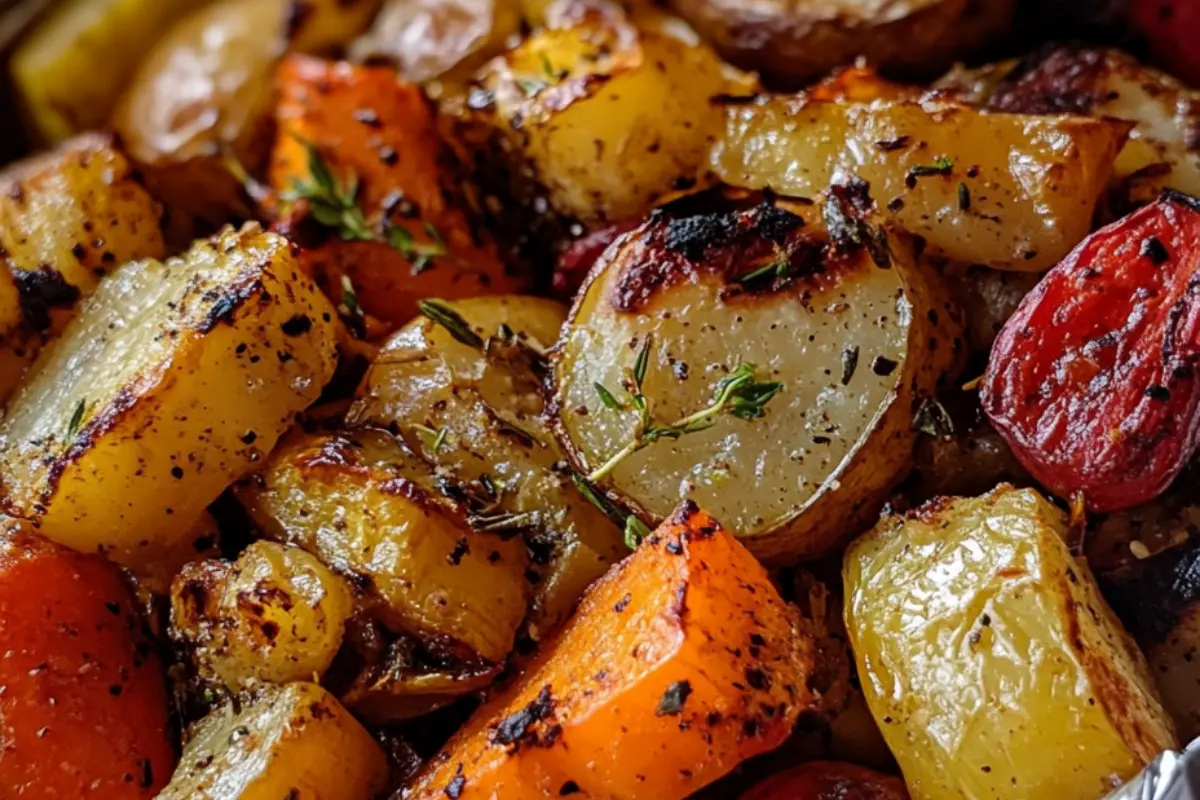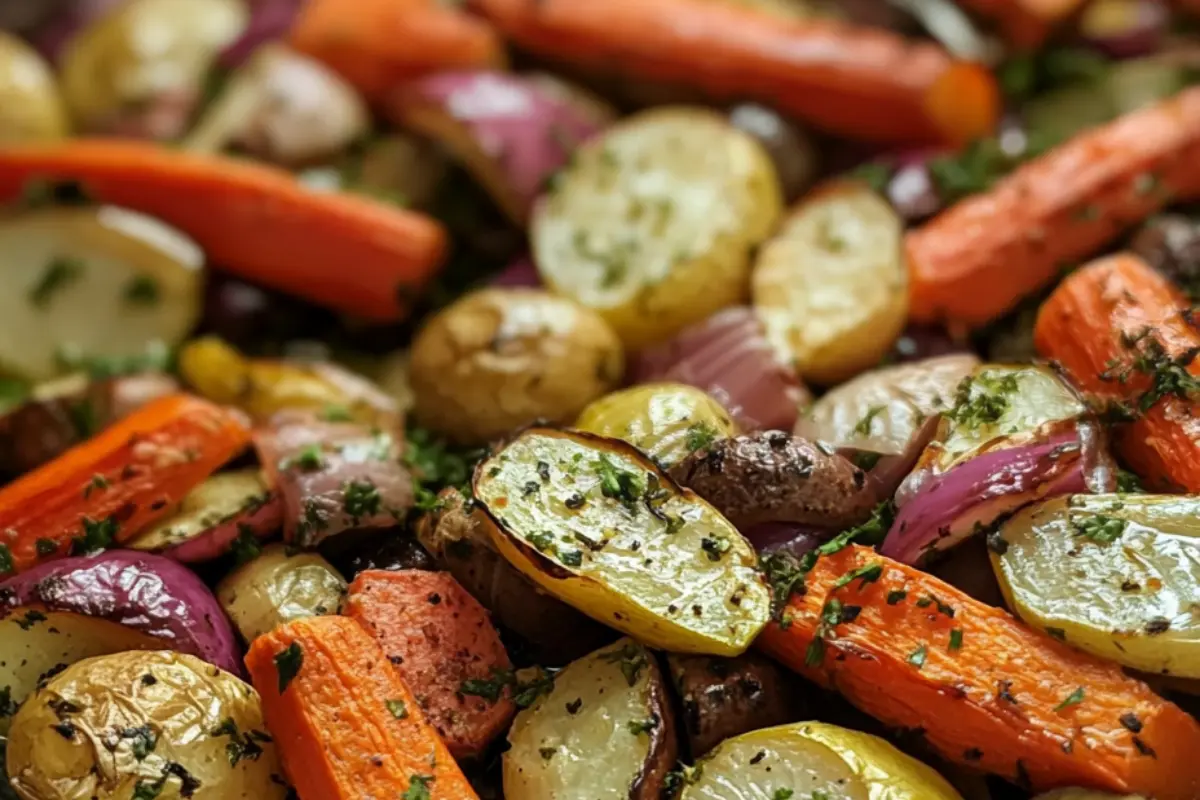
Part 1: Understanding Rhubarb
What is Rhubarb?
Rhubarb is a unique perennial plant known for its long, fleshy stalks and striking red hue. Despite often being used in sweet desserts, rhubarb is actually a vegetable. It has a tart, tangy flavor that makes it a distinctive addition to both sweet and savory dishes. Rhubarb is typically harvested in the spring and early summer, providing a fresh and vibrant ingredient for various recipes. However, it’s essential to note that while the stalks are edible, the leaves are toxic and should never be consumed.
Nutritional Benefits of Rhubarb: Rhubarb roasted vegetables
Rhubarb is a nutritional powerhouse, offering numerous health benefits. It’s low in calories, making it an excellent choice for those looking to manage their weight. A single cup of rhubarb provides a significant amount of vitamin K, which is vital for bone health and blood clotting. Additionally, rhubarb is rich in vitamin C, which boosts the immune system, and potassium, which helps maintain healthy blood pressure levels. The vegetable also contains fiber, aiding in digestion and promoting a healthy gut.
Common Uses of Rhubarb in Cooking
Rhubarb’s versatility extends beyond its common use in pies and crumbles. It can be incorporated into a variety of dishes, both sweet and savory. In desserts, rhubarb is often paired with strawberries or other fruits to balance its tartness. However, rhubarb can also shine in savory dishes. It can be stewed and used as a sauce for meats, or added to salads for a refreshing tang. Roasting rhubarb with other vegetables brings out its unique flavor, making it a surprising yet delightful addition to your meals.
Health Benefits of Rhubarb
Rhubarb offers several health benefits due to its rich nutritional profile. It is high in antioxidants, which help fight off free radicals and reduce inflammation in the body. The fiber in rhubarb aids digestion, while its low calorie content makes it an excellent choice for those looking to maintain a healthy weight. Rhubarb is also known to have anti-bacterial properties, which can help in maintaining good gut health.
Historical and Cultural Significance of Rhubarb
Rhubarb has a rich history and cultural significance. It has been used for medicinal purposes in ancient Chinese medicine for thousands of years. The plant was highly valued and even traded as a precious commodity along the Silk Road. In Europe, rhubarb gained popularity in the 18th century as a culinary ingredient. Today, it is celebrated in various festivals and food events, showcasing its versatility and unique flavor.
Part 2: Rhubarb Roasted Vegetables Recipe
Ingredients for Rhubarb Roasted Vegetables
To make rhubarb roasted vegetables, gather the following ingredients:
- 2 cups of chopped rhubarb stalks
- 1 red bell pepper, chopped
- 1 yellow bell pepper, chopped
- 2 cups of cherry tomatoes
- 1 large red onion, sliced
- 3 tablespoons of olive oil
- 2 cloves of garlic, minced
- Salt and pepper to taste
- Fresh herbs (such as thyme or rosemary) for garnish
Step-by-Step Cooking Instructions for Rhubarb roasted vegetables
vegetables
Preparing the Rhubarb
Start by thoroughly washing the rhubarb stalks to remove any dirt. Trim off the ends and cut the stalks into 1-inch pieces. Rhubarb’s tartness can be strong, so to mellow the flavor, soak the pieces in a mixture of water and a small amount of sugar for about 10-15 minutes before roasting.
Choosing and Preparing Other Vegetables for Rhubarb roasted vegetables
Select fresh, colorful vegetables to complement the rhubarb. Chop the red and yellow bell peppers into bite-sized pieces, slice the red onion, and halve the cherry tomatoes. Ensure all the vegetables are of similar size to ensure even roasting and perfect texture.
Roasting Process
Preheat your oven to 400°F (200°C). In a large bowl, toss the chopped rhubarb and other vegetables with olive oil, minced garlic, salt, and pepper. Spread the mixture evenly on a baking sheet. Roast in the preheated oven for 25-30 minutes, or until the vegetables are tender and slightly caramelized, stirring halfway through to ensure even cooking.
Tips for Perfect Roasting
- Ensure vegetables are evenly coated with oil to promote even roasting.
- Stir the vegetables halfway through cooking to prevent sticking and ensure even browning.
- For extra flavor, add fresh herbs such as thyme or rosemary during the last 5 minutes of roasting to infuse the dish with aromatic notes.
Variations and Substitutions
Feel free to get creative with your rhubarb roasted vegetables. You can add other vegetables such as carrots, zucchini, or Brussels sprouts to the mix. For a touch of sweetness, drizzle honey or balsamic glaze over the vegetables before roasting. You can also experiment with different herbs and spices to suit your taste, making this dish truly your own.
Serving Suggestions and Pairings
Rhubarb roasted vegetables can be served as a side dish or a main course. They pair well with grilled meats, fish, or tofu. For a complete meal, serve the roasted vegetables over a bed of quinoa or brown rice. You can also toss them with cooked pasta and a sprinkle of Parmesan cheese for a hearty and satisfying dish. The tangy flavor of rhubarb complements a wide range of dishes, making it a versatile addition to your meal rotation.
Storage and Reheating Tips for Rhubarb roasted vegetables
If you have leftovers, store the rhubarb roasted vegetables in an airtight container in the refrigerator for up to 3 days. To reheat, spread the vegetables on a baking sheet and warm them in a preheated oven at 350°F (175°C) for 10-15 minutes, or until heated through. You can also reheat them in a skillet over medium heat, stirring occasionally, until they are warmed to your liking. Avoid microwaving, as it may cause the vegetables to become mushy.
Part 3: Health Benefits of Eating Rhubarb Roasted Vegetables
High Nutrient Content in Rhubarb roasted vegetables
Rhubarb roasted vegetables are packed with essential vitamins and minerals. Rhubarb itself is rich in vitamin K, vitamin C, and fiber, while the addition of other vegetables boosts the dish’s nutritional profile, providing a wide range of nutrients necessary for maintaining good health.
Rhubarb roasted vegetables: Rich in Antioxidants
Both rhubarb and the accompanying vegetables are high in antioxidants, which help combat free radicals in the body. These antioxidants can reduce inflammation and lower the risk of chronic diseases such as heart disease and cancer.
Aids in Digestion
Rhubarb is known for its high fiber content, which aids in digestion and promotes regular bowel movements. The inclusion of other fiber-rich vegetables further enhances this benefit, making rhubarb roasted vegetables a great addition to a digestive-friendly diet.
Supports Heart Health
The combination of rhubarb and other vegetables provides a heart-healthy dish. Rhubarb contains compounds that may help lower cholesterol levels, while the variety of vegetables offers essential nutrients that support cardiovascular health.
Rhubarb roasted vegetables Promote Weight Management
Rhubarb roasted vegetables are low in calories and high in fiber, making them an excellent choice for those looking to manage their weight. The fiber content helps you feel full for longer, reducing the likelihood of overeating. Additionally, the variety of vegetables in the dish provides essential nutrients without adding excessive calories.
Rhubarb roasted vegetables Enhance Immune Function
The high vitamin C content in rhubarb helps boost the immune system, protecting the body against infections and illnesses. The antioxidants found in rhubarb and other vegetables also play a role in enhancing immune function by reducing oxidative stress and inflammation. Including rhubarb roasted vegetables in your diet can help support overall health and well-being.
Part 4: FAQs about Rhubarb and Rhubarb roasted vegetables
What’s the Healthiest Way to Eat Rhubarb?
The healthiest way to eat rhubarb is by incorporating it into balanced dishes that provide a mix of nutrients. Roasting rhubarb with other vegetables is an excellent way to enjoy its benefits without adding excessive sugar. You can also add it to salads or stews for a nutritious boost. Avoid eating rhubarb leaves, as they are toxic and can cause severe health issues.
How to Get the Tartness Out of Rhubarb?
Rhubarb’s tartness can be balanced by pairing it with sweeter ingredients. When roasting, you can soak rhubarb pieces in a sugar-water mixture before cooking. Adding a small amount of honey, maple syrup, or a natural sweetener can also help mellow the tartness. Cooking rhubarb with naturally sweet vegetables like carrots or sweet potatoes can further reduce its tart flavor.
Is There a Lot of Sugar in Rhubarb?
Rhubarb is naturally low in sugar, with only about 1 gram of sugar per cup. However, because of its tartness, rhubarb recipes often include added sugar to balance the flavor. When preparing rhubarb dishes, especially savory ones like roasted vegetables, you can control the amount of added sugar to keep the dish healthy and suitable for those monitoring their sugar intake.
What is the Best Sweetener for Rhubarb?
The best sweetener for rhubarb depends on your dietary preferences and the dish you are preparing. Natural sweeteners like honey, maple syrup, or agave nectar are excellent choices for balancing rhubarb’s tartness. For a low-calorie option, you can use stevia or monk fruit sweetener. These alternatives can provide the desired sweetness without the added calories and can be adjusted to taste.
Can You Eat Rhubarb Raw?
While rhubarb can be eaten raw, it is very tart and may not be enjoyable for everyone. If you decide to eat it raw, try dipping the stalks in sugar or honey to balance the tartness. Alternatively, mix raw rhubarb with sweeter fruits in a salad or smoothie. Remember, always avoid eating rhubarb leaves, as they are toxic.
How Do You Store Fresh Rhubarb?
To store fresh rhubarb, remove the leaves and wrap the stalks in a damp paper towel. Place the wrapped rhubarb in a plastic bag and store it in the refrigerator. This method helps keep the rhubarb fresh for up to two weeks. You can also freeze rhubarb by chopping it into pieces, placing them on a baking sheet, and freezing them until solid. Transfer the frozen rhubarb to a freezer bag or container for long-term storage.
Is Rhubarb Safe for Everyone to Eat?
While rhubarb is safe for most people to eat, it should be consumed in moderation by those with certain health conditions. Rhubarb contains oxalates, which can contribute to kidney stones in susceptible individuals. If you have a history of kidney stones, consult your doctor before adding rhubarb to your diet. Additionally, always ensure that rhubarb leaves are removed and not consumed, as they are toxic.
Part 5: Conclusion and Takeaways for Rhubarb roasted vegetables
Conclusion and Takeaways
Incorporating rhubarb roasted vegetables into your diet is a delightful way to enjoy the unique flavors and numerous health benefits of this versatile vegetable. Whether you’re looking to boost your nutrient intake, experiment with new culinary combinations, or simply enjoy a tasty and healthy dish, rhubarb roasted vegetables are an excellent choice. Remember to balance the tartness of rhubarb with sweeter ingredients and try different vegetables and herbs to create your perfect recipe. Enjoy the journey of discovering how versatile and beneficial rhubarb can be!
What’s your favorite way to prepare rhubarb? Share your tips and recipes in the comments below!




